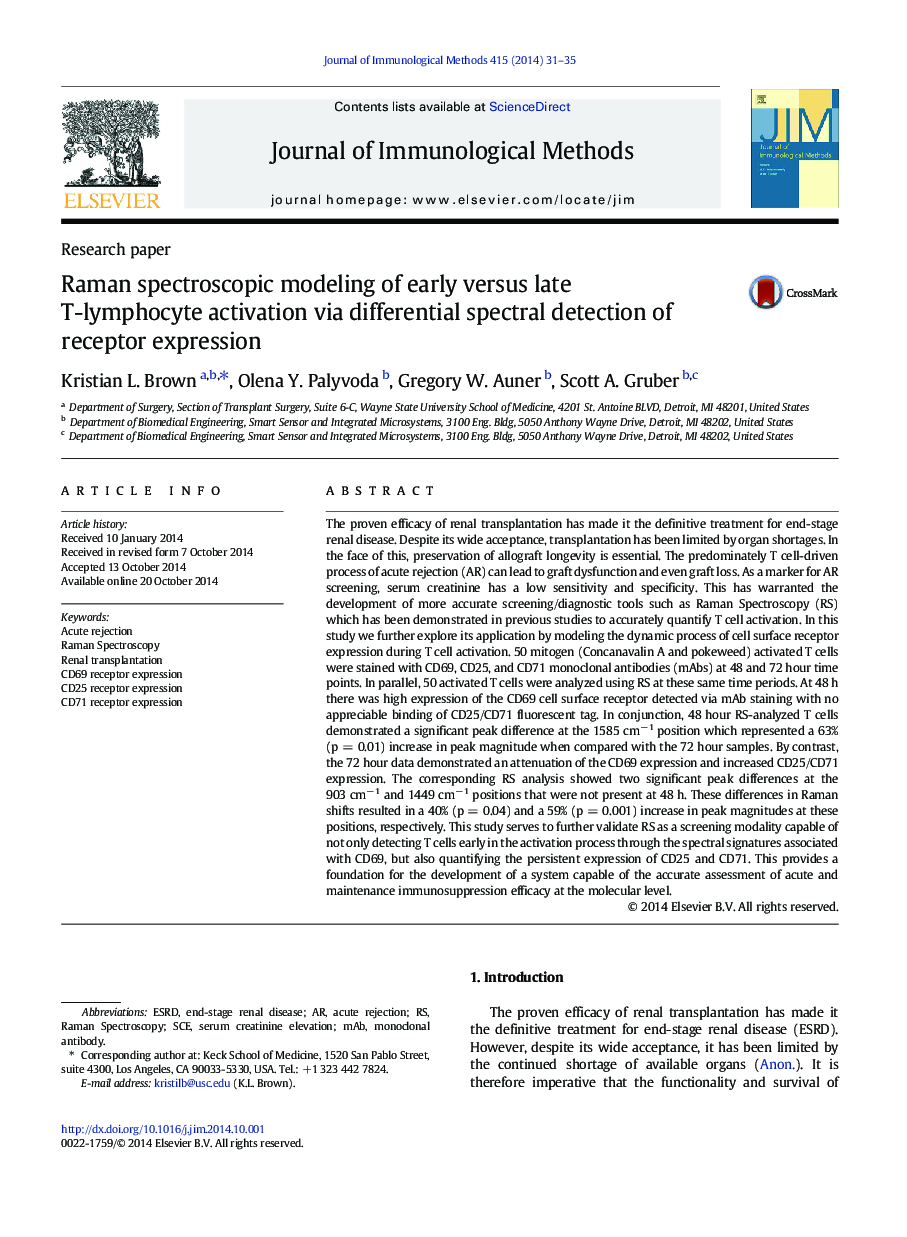| Article ID | Journal | Published Year | Pages | File Type |
|---|---|---|---|---|
| 2088163 | Journal of Immunological Methods | 2014 | 5 Pages |
The proven efficacy of renal transplantation has made it the definitive treatment for end-stage renal disease. Despite its wide acceptance, transplantation has been limited by organ shortages. In the face of this, preservation of allograft longevity is essential. The predominately T cell-driven process of acute rejection (AR) can lead to graft dysfunction and even graft loss. As a marker for AR screening, serum creatinine has a low sensitivity and specificity. This has warranted the development of more accurate screening/diagnostic tools such as Raman Spectroscopy (RS) which has been demonstrated in previous studies to accurately quantify T cell activation. In this study we further explore its application by modeling the dynamic process of cell surface receptor expression during T cell activation. 50 mitogen (Concanavalin A and pokeweed) activated T cells were stained with CD69, CD25, and CD71 monoclonal antibodies (mAbs) at 48 and 72 hour time points. In parallel, 50 activated T cells were analyzed using RS at these same time periods. At 48 h there was high expression of the CD69 cell surface receptor detected via mAb staining with no appreciable binding of CD25/CD71 fluorescent tag. In conjunction, 48 hour RS-analyzed T cells demonstrated a significant peak difference at the 1585 cm− 1 position which represented a 63% (p = 0.01) increase in peak magnitude when compared with the 72 hour samples. By contrast, the 72 hour data demonstrated an attenuation of the CD69 expression and increased CD25/CD71 expression. The corresponding RS analysis showed two significant peak differences at the 903 cm− 1 and 1449 cm− 1 positions that were not present at 48 h. These differences in Raman shifts resulted in a 40% (p = 0.04) and a 59% (p = 0.001) increase in peak magnitudes at these positions, respectively. This study serves to further validate RS as a screening modality capable of not only detecting T cells early in the activation process through the spectral signatures associated with CD69, but also quantifying the persistent expression of CD25 and CD71. This provides a foundation for the development of a system capable of the accurate assessment of acute and maintenance immunosuppression efficacy at the molecular level.
